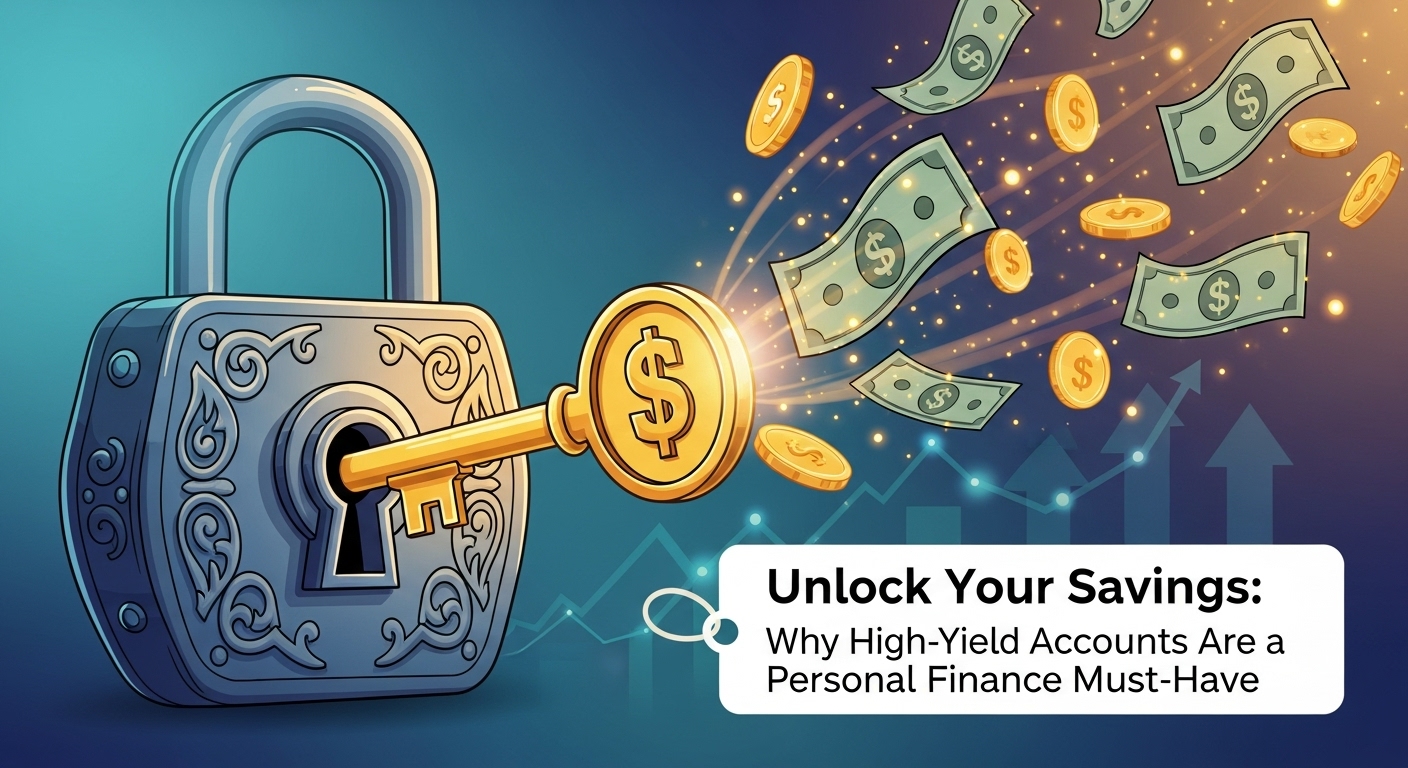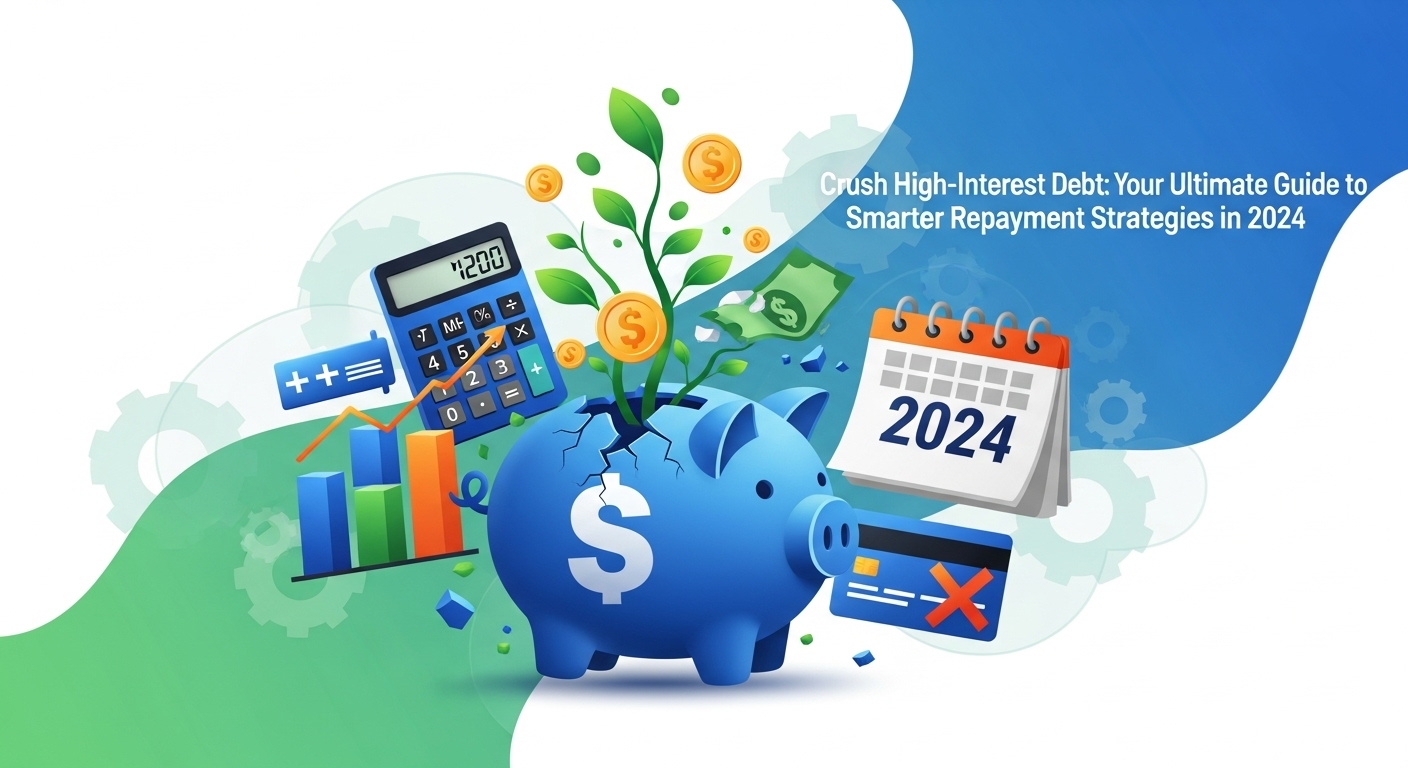Is Your Savings Account Actually Costing You Money?
Let’s be honest. For years, the humble savings account has been a reliable, if unexciting, pillar of personal finance. It’s the safe place you stash your emergency fund, your vacation savings, and your down payment dreams. But what if that ‘safe place’ is quietly losing a battle against inflation? For too long, traditional, big-bank savings accounts have offered interest rates so low they’re barely noticeable. We’re talking fractions of a percent, like 0.01% APY. At that rate, your money isn’t growing; it’s stagnating.
Enter the High-Yield Savings Account, or HYSA. This isn’t some complex, risky investment vehicle. It’s a savings account, plain and simple, but with a supercharged engine. In today’s economic climate, ignoring HYSAs is like choosing to walk when you could be driving a sports car. It’s a fundamental shift in how we should approach saving, and it’s one of the easiest and most impactful moves you can make to improve your financial health. If you’re serious about your personal finance journey, it’s time to understand why an HYSA isn’t just a good idea—it’s essential.
What Exactly is a High-Yield Savings Account?
At its core, an HYSA is a type of savings account that offers a significantly higher interest rate than the national average for standard savings accounts. While your local brick-and-mortar bank might offer a paltry 0.01% to 0.10% APY, it’s not uncommon to see HYSAs offering rates 10, 20, or even 50 times higher. This difference is not trivial; it’s the difference between earning a few cents and earning hundreds or even thousands of dollars on your savings each year, all for doing nothing more than choosing a better home for your cash.
How Can They Offer Such High Rates?
You might be wondering, what’s the catch? The secret lies in their business model. The vast majority of institutions offering top-tier HYSAs are online-only banks or the digital arms of larger financial companies. By forgoing the immense overhead costs associated with physical branches—rent, utilities, tellers, and maintenance—they can pass those savings directly on to you, the customer, in the form of higher interest rates. They operate efficiently in the digital space, and you reap the rewards. It’s a win-win situation that leverages modern technology to democratize better returns for everyone.
Are They as Safe as Traditional Banks?
This is a crucial question, and the answer is a resounding yes. As long as you choose a reputable institution, your money in an HYSA is just as safe as it would be at the megabank down the street. The key is to look for two acronyms: FDIC or NCUA. The Federal Deposit Insurance Corporation (FDIC) insures deposits at banks for up to $250,000 per depositor, per insured bank, for each account ownership category. The National Credit Union Administration (NCUA) provides the same coverage for credit unions. This means that even in the extremely unlikely event that the bank fails, your money is protected by the full faith and credit of the U.S. government. There is no difference in safety, only in returns.
The Showdown: HYSA vs. Traditional Savings
To truly grasp the power of an HYSA, let’s put it head-to-head with a traditional savings account. The difference is staggering and becomes more pronounced over time, thanks to the magic of compound interest.
A Tale of Two Savers
Imagine two friends, Alex and Ben. Both are diligent savers and have managed to build a $10,000 emergency fund. Their personal finance goals are similar, but their choice of savings account is not.
- Alex keeps their $10,000 in a traditional savings account at a big bank, earning 0.05% APY.
- Ben decides to move their $10,000 into an HYSA offering a competitive 4.50% APY.
Let’s see what happens after one year, assuming no additional deposits:
- Alex’s earnings: $5.00
- Ben’s earnings: $450.00
After just one year, Ben has earned $445 more than Alex simply by choosing a better account. Now, let’s extend that to five years, letting compound interest work its magic:
- Alex’s total after 5 years: $10,025.03
- Ben’s total after 5 years: $12,461.82
Ben is now nearly $2,500 richer without saving an extra penny. This isn’t a trick; it’s simple math. By letting your money sit in a low-yield account, you are actively giving up on free, risk-free money. It’s a fundamental concept in smart personal finance.
Fees and Accessibility
Beyond interest rates, HYSAs often win in the fees department as well. Many traditional banks charge monthly maintenance fees unless you meet certain minimum balance requirements or have other linked accounts. In contrast, the best HYSAs typically have no monthly fees and low or no minimum balance requirements. The trade-off is accessibility. With an online-only HYSA, you can’t walk into a branch. However, their digital platforms are usually top-notch, with excellent mobile apps for checking balances, depositing checks, and transferring funds 24/7. Transfers to and from your primary checking account are usually seamless and take only 1-3 business days.
How to Choose the Right HYSA for You
Convinced? Great. Now, how do you pick the right one? Here are the key factors to consider.
1. Annual Percentage Yield (APY)
This is the main event. The APY is the total amount of interest you’ll earn in a year, including the effect of compounding. While you should aim for a competitive rate, be aware that these rates are variable and can change with the federal funds rate. Don’t jump ship for a few hundredths of a percent, but do ensure the rate is significantly better than what you’re currently getting.
2. Fees and Minimums
Look for an account with no monthly maintenance fees and no minimum deposit requirement to open. Some may have minimum balances to earn the highest advertised APY, so read the fine print carefully. Check for other potential fees, like for wire transfers or excessive withdrawals (though Regulation D, which limited withdrawals, has been relaxed by many banks).
3. User Experience and Customer Support
Since you’ll be managing your money online, a user-friendly website and a highly-rated mobile app are crucial. Can you easily deposit checks with your phone? Is the interface intuitive? Read reviews about their customer service. While you may not need it often, knowing you can reach a helpful human when you do is important.
4. Account Integration
How easily can you link the HYSA to your existing checking account? The process should be simple and allow for smooth electronic transfers. This is how you’ll move money in and out, so ease-of-use is key for a good overall personal finance system.
Take Control of Your Financial Future Today
Switching to a High-Yield Savings Account is one of the highest-impact, lowest-effort changes you can make to your financial life. It requires a small amount of initial research and a few clicks to set up, but the long-term benefits are enormous. You’re not taking on risk; you’re simply making a smarter decision about where to store your cash.
Whether you’re building an emergency fund, saving for a house, or planning a dream vacation, an HYSA ensures your money is working for you around the clock, fighting inflation and accelerating your progress toward your goals. Stop letting your hard-earned savings languish. Take 30 minutes today to research the top HYSAs, compare their features, and open an account. Your future self, who is enjoying the fruits of compound interest, will thank you. This is a foundational step in building a robust and effective personal finance strategy.


